According to the latest authoritative survey conducted by International Wine and Spirit Research (IWSR) for the wine trade show organiser, Vinexpo, consumption of grape-based wine in the region reached 111.63 million 9-litre cases in 2008 – the equivalent of 1.34 billion bottles, and an increase of 51.93 percent compared to 2004. It is forecast to increase by another 25 percent between 2009 and 2013.
The big driver of this growth is China – including the Hong Kong Special Administrative Region, which is now regarded by the wine and spirits industry as “Asia’s most mature market”. Annual per-capita consumption in Hong Kong among people of legal drinking age is 3.6 litres compared with 2.5 litres in Japan and 2.1 litres in Singapore.
According to the latest confirmed sales figures, China and Hong Kong accounted for 68.9 percent of all still light wines consumed in Asia in 2008, and 3 percent of total world wine consumption, with the upward trend continuing.
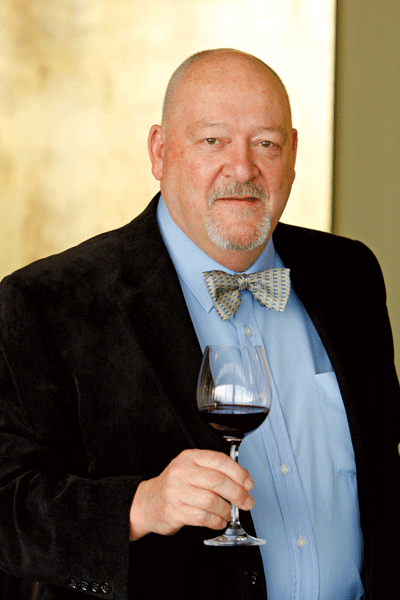
The art of pairing Western-style grape wine with Eastern cuisines, however, is at a relatively early stage, although Australian wine consultant Roy Moorfield began his pioneering work in the field some 30 years ago.
Moorfield made a study of the teas matched to different cuisines in China, and looked for points of equivalence in wines, with particular reference to the tannic structure of reds. For Thai cuisine, he looked at the fruit components and searched for comparable fruit-driven Australian wines.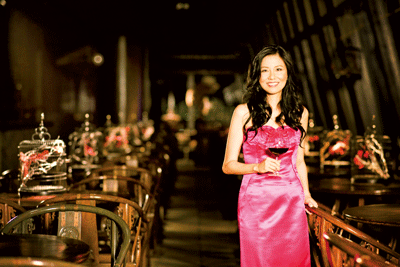
More recently, Jeannie Cho Lee, the first ethnically Asian Master of Wine, published a book called The Asian Palate in which she recommends wine pairings for dishes from China, India, Japan, Malaysia, Singapore and Thailand.
Cho Lee and Moorfield are wine consultants to Singapore Airlines and Cathay Pacific respectively, but although quality of wine service is a high priority for both carriers, both say that choosing wines specifically to match the dishes served on a particular route is impractical.
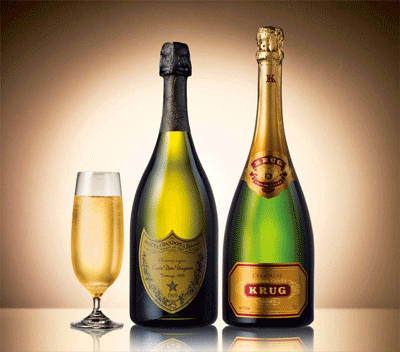
“We’re tasting on average anything from 100 to 180 wines per day, so there isn’t that much time to say ‘How do you think this will go with our latest Cantonese menu on our Singapore-Hong Kong flight?’” Cho Lee observes.
Cho Lee and fellow consultants, Australian Master of Wine Michael Hill-Smith and British wine consultant Stephen Spurrier, meet twice a year to blind-taste up to 1,000 wines.
Wines for economy class are selected with versatility in mind.
“You do notice things about certain routes,” says Cho Lee. “On the Singapore-to-Korea and Singapore-to-Japan routes there were a lot of passengers who liked Kabinett off-dry white, while other routes liked it far less.”
Efforts are made to keep popular wines on the list and change the less “sellable” ones.
First class and business class passengers enjoy far more choice. In August this year, Grand Cru red Burgundy joined Second Growth red Bordeaux among the options for Singapore Airlines’ passengers in the first class cabin.
“In first and business class you would probably have a choice also of New World red and several white wines. If you were on the route from Singapore to Paris, you would definitely have a Burgundy white. If you were going to California you would probably have a white from California. Depending on the sector, we try to allocate appropriate wines. It’s destination-focused rather than cuisine-focused,” says Cho Lee.
Cathay Pacific’s wine selection process reflects a similar set of priorities, as Roy Moorfield explains.
“The way we approach the selection of wine on board is to give people a choice, and we don’t specifically match unless we’re doing a particular promotion, such as matching a Sauternes with foie gras or blue cheese,” he explains.
But Moorfield, with the help of fellow wine consultants to Cathay Lau Chi Sun and Vic Williams, has conducted seminars for cabin staff on pairing Asian food with wine, but it is likely to be some time before the flight attendants can give informed advice on whether a shiraz or a cabernet sauvignon would go well with the beef in black bean sauce.
Singapore Airlines now has a team of “Air Sommeliers”, qualified through the UK Wine & Spirit Education Trust’s certification programmes, to provide professional wine service to customers and promote wine knowledge among fellow crew members.
A factor the consultants have to take into account when choosing wines for the carriers is that they taste different at altitude, particularly if they have been over-chilled.
“The tannins are accentuated [at flying altitude],” Cho Lee explains. “At colder temperatures the fruit is slightly more repressed, and the structure of the wine shows itself more. Also, as a passenger, your whole mouth is dry. When you taste wines in that condition, you are going to taste the tannins a lot more.”
Things are simpler on the ground, but hotels and independent restaurants are also having to adjust their service to new wine drinkers who are still developing preferences. Is this a challenge for sommeliers?
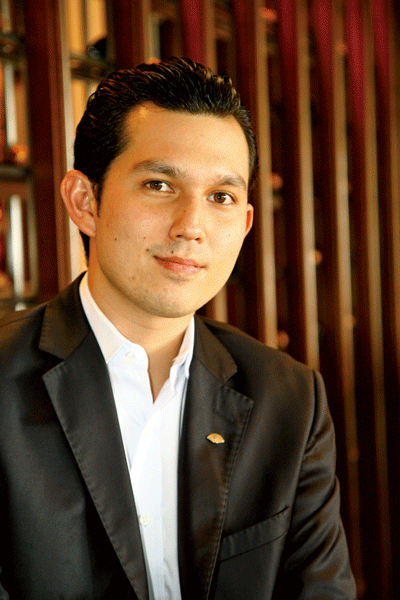
“It is not more challenging if you know the cuisine and the characteristics of the wine,” says Alex Huels, beverage operations manager of the Mandarin Oriental, Singapore.
“However you can come across certain guests who love to drink a certain wine but when doing so, the flavours can clash. A good example is trying to drink an oaky chardonnay with any strong Asian dish. The wine falls apart and tastes very bland, and your favourite wine becomes the most terrible thing you have ever tasted.”
Japan was the first Asian market to take a serious interest in wine, and according to Mitsuo Nakahata, sommelier at Nadaman at the Shangri-La Tokyo, there is now much more openness to matching it to Japanese dishes. Menus, he says, now tend to be more wine-friendly.
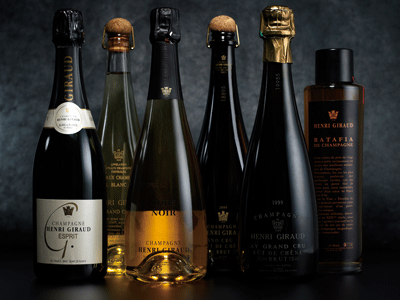
“I was taught that eating sashimi with sake and rice with tea would be better than drinking wine,” he says, “but compared with before, choosing wine in Japanese restaurants is getting easier. A greater variety of food can be found on the menu, which will go with wine these days.”
With more international hotel groups seeking to expand their presence in Asia, the issue of wine matching with non-Western cuisines becomes increasingly pressing. JW Marriott has recently launched a Wine Ambassador programme to develop a number of in-house wine experts at 46 locations worldwide. Some of these ambassadors will be stationed at Asian restaurants.
Asian meals that involve a large number of different dishes served simultaneously or in sequence remain a wine pairing challenge, but many hotels are now offering a greater range of wines by the glass to allow diners to sample a variety of different matches.
“By-the-glass choices are popular as they allow the guest to taste wines which he doesn’t know too much about, or wouldn’t normally try,” says Nicolas Pierron, head sommelier of the Island Shangri-La in Hong Kong, who says that for Western sommeliers coming to Asia the learning curve can be steep.
“I would say most Asians don’t like yellow wines, very dry white wines or red wines with harsh tannins. It’s definitely more challenging being in Asia, but I believe that once you understand an Asian guest’s taste and recommend a wine he likes, he will trust you.”
More marketing on the part of wine producers is now being addressed towards this part of the world, and “winemaker dinners”, at which the people who create the wines meet those who drink them, are now commonplace.
Asian influence on wine making, however, so far seems to be relatively slight, although France – which continues to dominate sales to Asia, albeit by a diminishing margin – does appear to be making some efforts to accommodate its new customers.
“Some wineries produce a special cuvée for Asia, a blend that is fruitier and not too dry,” says Pierron. “This might mean harvesting later in the year to ensure a higher sugar content, or mixing the percentage of the grapes. Even for Bordeaux en primeur, winemakers are known to have a sweeter wine ready for buyers,” he states.
Moorfield does not believe there is a parallel flexibility in Australia – now belatedly playing catch-up with France in the Asian markets – but also argues that it is not particularly desirable that there should be.
“I don’t think it’s fair to make the wine compromise when wines have so many attributes. When you look at the vast array of food in Asia we shouldn’t be looking to modify food or wine to match. We should be looking at the strengths of each. If you keep the purity of both, you’ll find natural connections anyway,” he asserts.
As more Asians become involved in making wine, however, it is also natural that they will think to some extent in terms of partnerships between their wines and their own national cuisines.
Since 2005, Charmaine Saw, a trained chef from Penang, has been making wines at the Umamu Estate in Australia’s Margaret River.
“She’s making wine, obviously with Asian food in mind, but she’s making damn good chardonnay and damn good cabernet sauvignon,” says Moorfield.
Saw says simply that her policy in the vineyard is to provide “the best environment for each variety to produce balanced fruit for our desired wine styles which reflect our tastes as well as what Margaret River is renowned for”.
In Spain, working for the Freixenet Group, Japanese wine maker Yoko Sato makes a wine called Oroya which is specifically intended to partner sushi and sashimi.
According to Sato the wine was created “to harmonise the wide ranging tastes of a sushi meal, from the mild raw fish and sweet rice vinegar to the savoury soy sauce and spicy wasabi and ginger”.
Sato makes the pale white wine from a blend of the Airen, Macabeo and Moscatel varietals.
Japanese chef Nobu Matsuhisa also has wines made specially to accompany his South American-influenced Japanese cuisine, including a chardonnay from Sonoma County and a cabernet sauvignon blended from grapes grown in the Napa Valley and Mendocino.
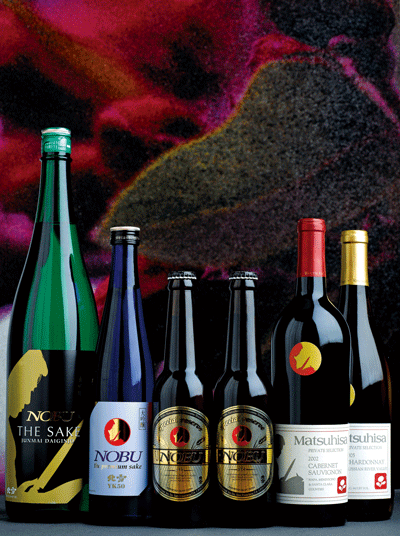
Producers of wines within Asia itself naturally encourage pairing of their wines with local cuisines, something particularly well advanced in Japan, and in China with producers such as Grace Vineyard.
Wine production is also now taking place in less likely Asian locations. Among the countries making what have become known as “New Latitude Wines” are India, Thailand, Vietnam and Myanmar.
At the Mandarin Oriental Bangkok, sommelier Tiwa Yenwattana recommends Thai wines to partner the Thai cuisine in the hotel’s Sala Rim Naam restaurant.
“Siam Winery’s Monsoon Valley wines and Chateau de Loei are top on our Thai wine list,” he explains.
“We serve Monsoon Valley wines – the red Shiraz Monsoon Valley 2009 Hua Hin Hills, and the white Colombard Monsoon Valley 2009 Hua Hin Hills by the glass at our Thai restaurant and The China House Restaurant. Chenin Blanc Late Harvest Monsoon Valley Hua Hin Hills is served as dessert wine at most of our restaurants, including the Bamboo Bar.”
German winemaker Katharin Puff, who oversees production at the Siam Winery, relishes the challenge of making wines to match cuisines with different tastes and textures to those of the Old World in the emergent Asian wine regions.
“Even after 25 years, we are still in the experimental phase and developing the character of Thai Wine,” says Puff.
“The white varietals are extremely aromatic and straight forward in their fruit profile, reminiscent of New World wines with a crisp with refreshing finish. The red wines show their typical character with hints of spice, some smokiness, jam and dark fruits. Their body is on the elegant side and balanced with a racy acidity more reminiscent of Old World wines. Sparkling wines are quite successful and will confuse some tasters in the near future.”
A lifestyle revolution has taken place as Asia continues to grow economically. We are at the dawn of a new era, and wine is the drink with which to toast it. n
Expert opinion
Defining the Asian palate
“Although all hotel and independent F&B outlets in the region claim that they have a thorough understanding of their clients’ taste, pairing Asian food and wine is still very much in its infancy,” observes wine consultant Simon Tam.
Tam is one of the founding organisers of the annual Cathay Pacific Hong Kong International Wine & Spirit Competition, a key component of which is matching wines to Asian dishes.
The wines are tasted blind by a panel of Asian and Asian-based wine experts to express, as the competition’s motto has it, “Asia’s Choice, Asia’s Voice”.
This year the recommended pairings are:
Chuo Budoshu Grace Koshu 2009 (Japan) – sashimi
Torlesse 2007 pinot noir (New Zealand) – dim sum
2008 Domain Road pinot noir (New Zealand) – braised abalone
2009 Hahn Estate Californian pinot noir (US) – kung pao chicken
Monemvasia St George regional red dry wine 2006 (Greece) – Peking duck
If you want a wine that is a successful match across a range of Chinese dishes though, Cathay wine consultant Roy Moorfield’s advice is simple.
“If you want a good versatile match,” he says, “go for a good dry rosé.”
Sommelier’s choice
“When I pair Chinese dishes with wine, I need to consider the spices used, whether the dish is oily, and the cooking method, whereas with French cuisine, I select wines based on the sauce and ingredients,” says the Island Shangri-La’s Nicolas Pierron.
“To accompany the appetiser boneless chicken in spicy ginger sauce, I would choose a white wine such as a chardonnay from the Rhone Valley or from Argentina. The wine should be round and creamy on the palate, and also complement the spices, not overpower them.”
“To accompany a barbequed suckling pig dish, I would choose a light red pinot noir from Burgundy or the US. The wine should have a dry finish to counteract the fat of the pig’s skin, and cleanse the palate. To accompany braised Yoshihama abalone with goose web in oyster sauce, I would select a slightly sweet white wine such as pinot gris which is off-dry, leaves a sugary residue on your palate and has a dry finish.”
Simon Sun, sommelier at Centro in Shangri-La’s Kerry Centre Hotel Beijing, recommends pinot noir with the all-time favourite of Peking duck. “A fruity wine with red berries, with its light and balanced tannins, goes well with the thick sweet flavour of a duck roasted over fruit-tree wood chips,” he explains.
Tiwa Yenwattana of the Mandarin Oriental Bangkok says for Thai dishes, fruitiness should balance the spice.
“The matching white wine should be slightly fruity and off dry, for example riesling or Gewurztraminer. As for red wine, it should be ripe with low tannins, for example Barbera or pinot noir,” he says, suggesting German riesling for pomelo salad, Alsace Gewurztraminer for coconut chicken soup and pinot noir for a red lamb curry.
“When pairing wines with Asian cuisine, I will usually look out for wines that are aromatic, fruity with moderate levels of alcohol, and with softer tannins and crisper acidity.” Says Alex Huels of the Mandarin Oriental in Singapore.
“To me, it is all about finding the harmony and balance within the context of spicy, sour, salty and sweet. For Hainan chicken, I would choose a German riesling. I find that they generally work quite well with Chinese food as the wine balances with the sweet and complements the salty flavours of the dish. Another example would be New Zealand sauvignon blanc for satays with peanut sauce.”








